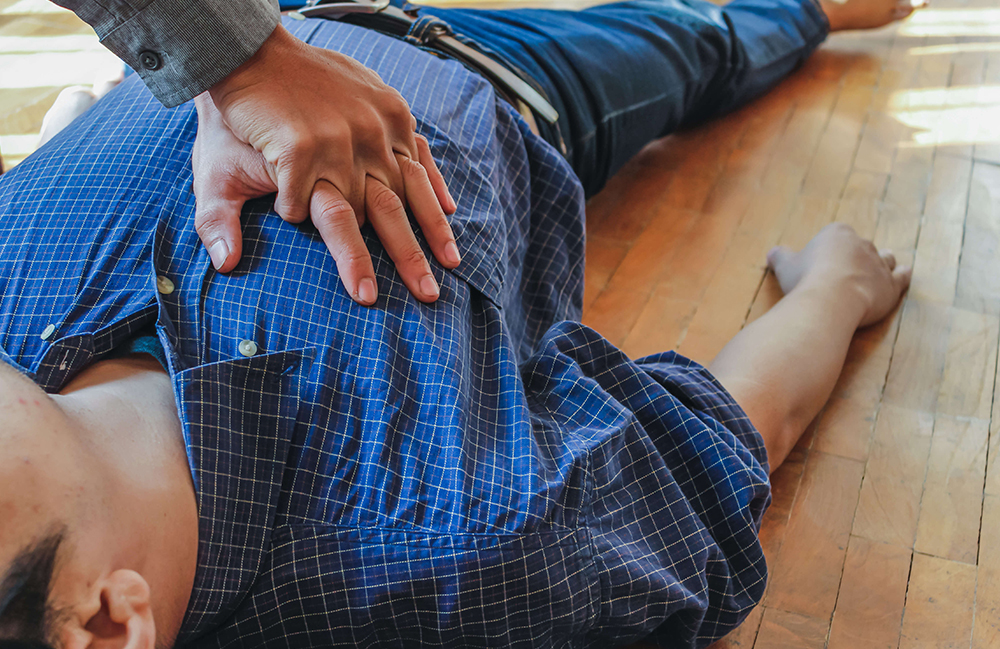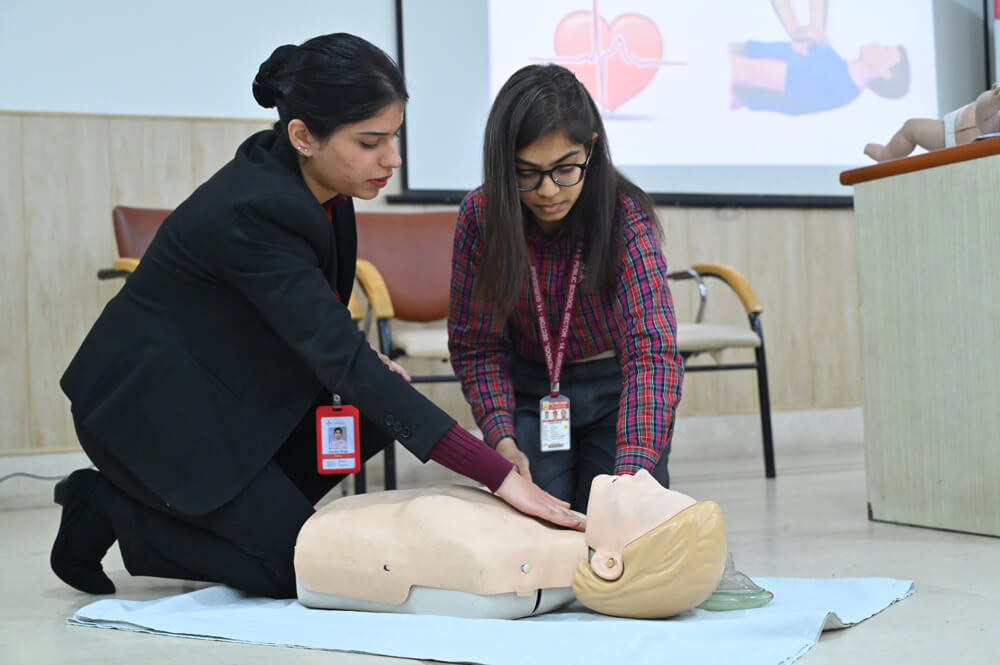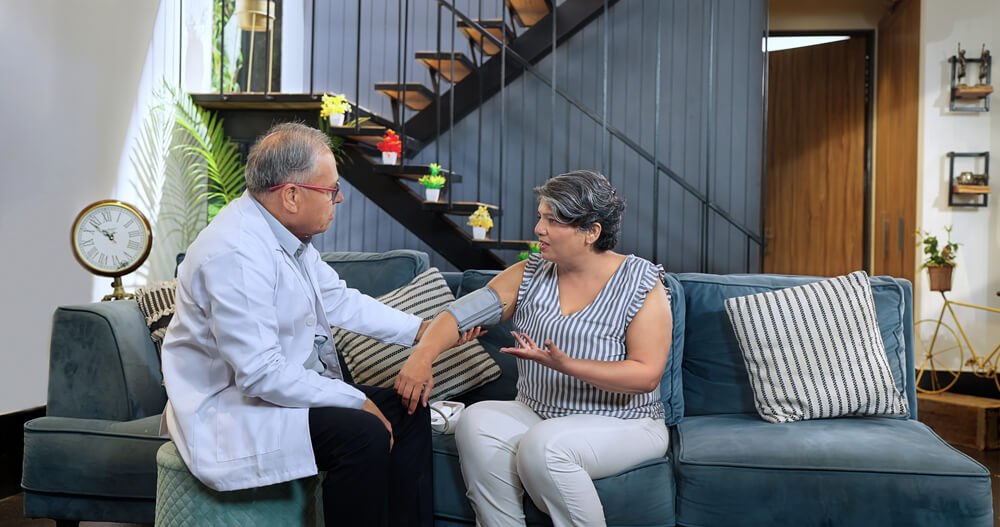


As a concerned citizen, you may wonder if CPR must only be performed by doctors and healthcare professionals. But in a crisis, what is more important – waiting for trained and skilled assistance or providing instant help? What’s best for patient safety?
As you may already know, Cardiopulmonary Resuscitation (CPR) is a lifesaving technique crucial in emergencies, particularly in cases of heart attack or sudden cardiac arrest.
When the heart stops beating, trained CPR givers (whom we call Heartstrong Heroes) can administer chest compressions to maintain vital blood flow to the heart and brain until professional medical help arrives. Timely CPR can double or even triple a cardiac arrest victim’s chance of survival.
In this article, we aim to provide clear guidance on the role of individuals in emergencies and the impact their actions can have. We want to empower readers with knowledge and confidence in their ability to save lives potentially.
It’s a tricky question with a relatively simple answer.
CPR is an emergency procedure used when the heart stops beating, aiming to manually preserve brain function until further measures are taken to restore spontaneous blood circulation and breathing.
The basic steps involve chest compressions at a rate of 100 to 120 compressions per minute. The primary goal is to pump blood and oxygen throughout the body, especially to the brain and heart, to prevent severe organ damage.
The difference between CPR performed by a layperson and a medical professional lies mainly in technique and additional resources. Professionals may use advanced equipment like defibrillators and administer medications. However, the fundamental principles remain the same.
According to the American Heart Association (AHA), timely intervention is more crucial than waiting for high-quality help. The chances of survival decrease by 7-10% with each minute that passes without CPR. Therefore, immediate action by anyone present and trained, regardless of their medical expertise, can be life-saving.
It’s good to know the legalities and ethics involved in CPR.
Performing CPR as a non-medical professional is governed by legal and ethical frameworks that encourage bystanders to assist in emergencies without fear of legal repercussions.
Key among these are Good Samaritan laws, present in many countries or states (formally as law or informally as a directive). According to Wikipedia, these Good Samaritan laws offer legal protection to people who reasonably assist those who are, or whom they believe to be, injured or in peril.
These laws typically protect rescuers from being held legally liable for harm that might occur due to their assistance as long as they acted voluntarily, without gross negligence or intentional misconduct.
Ethically, a moral imperative suggests that if one possesses the skills to help in an emergency, one should do so. This moral responsibility is underscored by the potential to save lives.
However, it’s also crucial for bystanders to recognize their limits and call for professional medical help as soon as possible. The ethical goal is to do more good than harm, balancing the need to act to ensure the victim receives the best possible care.
Anyone able and willing can offer CPR, but trained hands can help better.
CPR training is widely available and highly encouraged for the general public, not just for healthcare professionals. Community centers, local hospitals, and organizations may offer courses. According to the Red Cross, their certifications are OSHA compliant, available worldwide, and have high standing. These training sessions are crucial, as they equip individuals with the skills to respond effectively in emergencies.
The training typically covers the basics of CPR, including chest compressions and the use of bag-valve masks to aid patient ventilation.
The use of automated external defibrillators (AEDs) is also taught. Participants learn the correct hand placement, depth, and rhythm of chest compressions.
By simulating emergency scenarios, these courses prepare individuals to remain calm, assess the situation, and take appropriate action.
Upon completion, participants usually receive a certification affirming their competency in performing CPR. This education is invaluable, empowering people to save lives in critical situations.

Success rates are better when skilled hands do CPR – so getting trained is better.
The outcomes of CPR can vary significantly based on who performs it and the circumstances. Studies suggest that even when CPR is administered by untrained bystanders immediately after cardiac arrest, the victim’s chance of survival can double or triple.
However, according to Graham R et al., writing a paper for the Committee On The Treatment Of Cardiac Arrest, overall cardiac arrest survival rates from untrained CPR givers remain relatively low, ranging from 5% to 31%, depending on various factors like the immediate use of defibrillation.
CPR performed by laypersons, despite being potentially lifesaving, does have limitations. The effectiveness can be influenced by the responder’s training level, physical strength, and emotional state during the emergency.
In real-life scenarios, laypersons might face challenges such as hesitancy due to fear of harm, physical fatigue while performing compressions, and the stress of an emergency. These factors can impact the quality and consistency of CPR. On the other hand, trained CPR givers are taught to handle high-pressure situations with more experience and resources.
Indeed! Learn to give CPR in crises – and also encourage preemptive heart care.
Proactive measures are pivotal in reducing the risk of heart emergencies, underscoring the adage that “prevention is better than cure.” You could start by advising and encouraging others on one vital topic. Tell them that if they have chronic conditions such as obesity, cholesterol, diabetes, and hypertension – along with other hereditary factors – it can all have a multiplicative impact on their heart.
Regular checkups to monitor these conditions, and making the necessary lifestyle changes and medical interventions, are the ways to mitigate these risks.
And don’t forget to practice what you preach. Your own heart care regimen is just as important and an inspiration to others, especially if you aim to become a CPR-trained first responder.v
According to SimonMed, while knowing CPR is vital for immediate intervention, maintaining a healthy heart can significantly reduce the need for such emergency measures. Proactive heart care enhances individual well-being and reduces the broader societal impact of cardiac emergencies.

If you’ve had any doubts before on whether only medical professionals can give CPR in emergencies, we hope this article has shown that you can help as a layperson too. The Good Samaritan laws recommend firmly that you must try to help. If you get yourself trained for CPR, all the better for emergency patients.
And in all this debate, don’t forget your role in educating society to take preventive heart care as seriously as you, too, should do. Make this your mandate: Be CPR-aware. Save lives. Be a Heartstrong Hero.